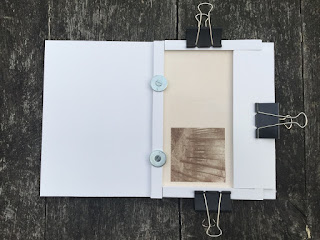Paper Scraps: More Notecards!
My recent work in the darkroom has had me focused on small prints including some 4x6” notecards. The small prints were 6x6” printed on 8x8” paper. I really like the look of this format and when a print comes out well it is a small jewel in one’s hand. I have been printing on Ilford’s MG Art 300 cotton rag paper. It has a very nice texture and feel to it as well as a nice visual quality. A break from smooth untextured FB prints.
I was cutting the 8x8” paper from 12x16” sheets. This meant I got a 4x8” scrap of every print or test print I made. I ended up with a decent pile of thee scraps. On the back of my pleasing notecard project I realized these scraps would make nice cards aqs well but 4x4” in size once folded. I experimented with two image sizes 3 1/2 x 3 1/2“ with 1/4” borders and 3 x 3” with 1/2” borders. I used the North Wales photos from my previous post on the 6x6” images.
I had to adjust the exposure by removing a stop of exposure to compensate for the smaller image. For the three tree image I figured out that I could also open up the aperture and reduce the exposure times for each filter correspondingly. This would make the time exposing each image a little shorter. The burn pattern is simple enough that reducing the burn times as well didn’t create any problems for me.
The original 6x6” exposure was
- 150W lamp
- 2x ND filters
- F11
- Flash 2 seconds
- 00 filter 22 seconds
- 5 filter 32 seconds
- Burn left 00 filter 22 seconds
I found with the easel brought up so close to the enlarger head I could not flash for even 1 second without noticeable fogging. My light for flashing is attached to the enlarger lens assembly and moving the head higher would require refocus and composition for each print I flash. The modified arrangement for the 3 1/2 x 3 1/2 inch image was to reduce filter times to 11” for 00 filter and 16” for 5 filter, this was one stop less exposure. To further reduce exposure times from this test setting I opened up the aperture to f8 and reduced the timings again by one stop to 6 second for 00 filter and 8 seconds for 5 filter. Burn was about 8 seconds on the left with 00 filter. The burn time was left a little high to compensate for the lack of paper flashing. Thus I went from over a minute to less than 30 seconds of time in the enlarger.
3.5 x 3.5 exposure
- 150W lamp
- 2x ND filters
- F8
- No Flash
- 00 filter 6 seconds
- 5 filter 8 seconds
- Burn left 00 filter 8 seconds
I adjusted the exposure by 1/4 stop for the 3x3” version.
3 x 3 exposure
- 150W lamp
- 2x ND filters
- F8
- No Flash
- 00 filter 5 seconds
- 5 filter 7 seconds
- Burn left 00 filter 5 seconds
Here are the two layouts.
 |
| 3.5x3.5" image (full 4x8" card) |
 |
| 3x3" image (full 4x8" card) |
The forest image was a little more trouble getting a good image. Because the negative is so thin I needed to be fully stopped down to f22 with 2x ND filters which adds two more stops. This meant I couldn't shorten my exposure time much.
I ended up only doing the 3x3" image size as I liked it best.
3x3 exposure for North Wales Forest
- 150W lamp
- 2x ND filters
- F22
- No Flash
- 00 filter 5 seconds
- 5 filter 27 seconds
- Burn corners 00 filter 4 seconds
 |
| 3x3" image (full 4x8" card) |
To dry these cards I made a new piece to fit the drying frame I describe in the previous post where I make the 4x6” cards. In this case I made 4 plastic pieces 19.5mm by 63 mm. I tuck the 4x8” sheet from this project under the center clamp then use the side clamps and finally add the new section whose width allows it to overlap the narrower paper and still use a bulldog clip to apply some clamping paper. MG Art 300 paper is not as hard to dry flat as normal FB paper so the clamping pressures should be light. I have also gotten away with just weighing down the edges as well.
 |
| Drying system with one 4x8” sheet in place. New component is on the right. |

Comments